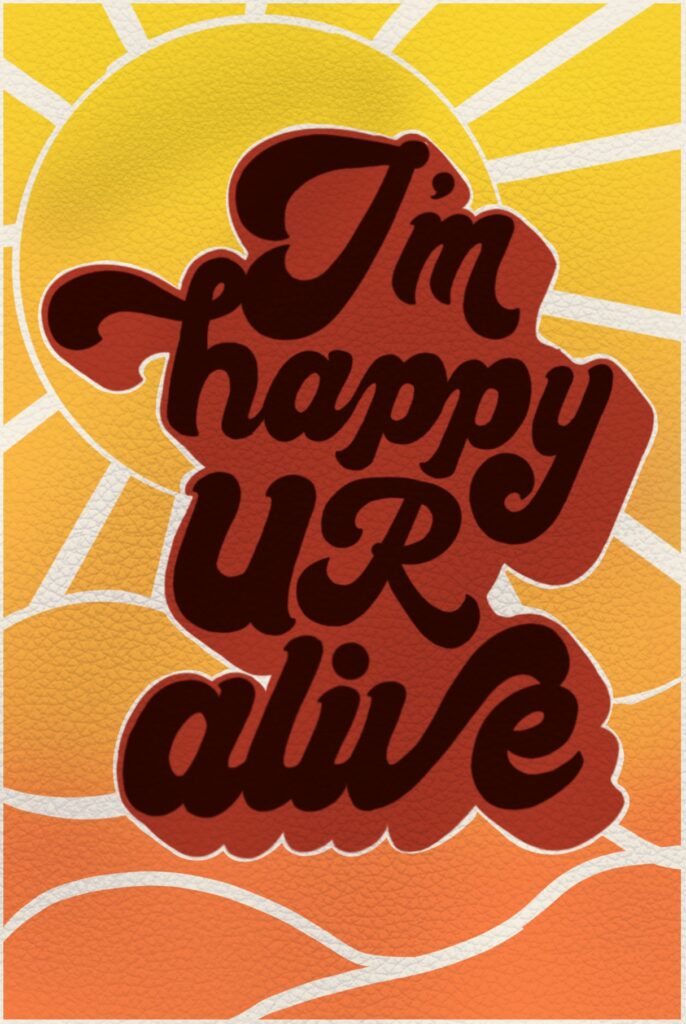
“I’m happy UR alive” was the slogan that began popping up all over my first student teaching placement. We painted it on banners, taped it on little scraps of paper to the wall, teachers wore it on t-shirts and reminded students to say it to each other at the end of class. I can’t say for sure how it impacted the students, but it helped me solidify the way I wanted students to feel in my classroom. It became a priority to me that my students knew I wasn’t just happy they were alive, I was happy they were in my classroom every day. The grumpier a student, or the more they challenged me, the more intentional I became at telling them I was happy to see them. I wish I was there longer than seven weeks, and could have seen if it made a difference to those students, but I know it made a difference to me. The more I focused on making students feel valued in my classroom, the more patience I had, the more positive I felt, and the better teacher I became. I am under no delusion that I will never have students that push me to the edge, or that I struggle with no matter what I try. But I do know that it will always be my goal to make sure every student knows that I am happy to see them in my class.
All students deserve to feel important and like they belong where they come to learn, but it’s even more important when asking them to make art. Art-making is an inherently vulnerable practice because it is a consistent process of growth and self expression. As artists we have to be willing to explore and take risks, to make and learn from mistakes. As artists we also have to be willing to be vulnerable by expressing ourselves in our work. Students need to feel comfortable and valued in the art-room to be able to face these challenges and learn through art. Art has countless purposes and possibilities. My goal will always be for art to meet the needs of each student.
There are two purposes of art that I hold dear and believe every student can benefit from. The first is that making art teaches us how to think critically and creatively. Through art practices like observational drawing students learn to trust themselves and observe the world clearly, by analyzing art they learn how to interpret evidence and understand context, and through creation students learn to share their voice.
Equally important is expression, self reflection, and the opportunity to create joy. I believe in the potential and opportunity for art to reflect and express deep and meaningful aspects of students’ lives and selves, and allow them to explore themselves seriously. However, I also believe that creating happiness, fun, and joy, are just as important and valid in artmaking. During student teaching I created a self portrait printmaking lesson focused on identity. One student was very high achieving and involved in social advocacy. I was excited to see how this student explored her deep passion through this work, and surprised when her initial focus was on her love for One Direction and their music. For that student, art needed to be a place where she was just a teenage girl who cared deeply about a band. That was something important to her, and that made her happy to express. She spent so much time outside of the art room being high achieving and fighting hard for a better world, and in the art room she needed to make art that brought her joy.
Creating a safe and positive environment where students feel important and safe to grow and learn through art. Every student can learn from art, and benefit from exploring and expressing themselves, and creating work that brings them joy so that they can feel as happy walking into the art room, as I am to see them. Art can support every student where they are at when they come into the classroom, and it’s a privilege as an educator to facilitate that experience.
As teachers, it is our duty to never stop learning and improving how we teach. While many aspects of my philosophy are fundamental, every student deserves equitable inclusion in the art-room, every student deserves to feel loved and safe at school. I anticipate that my teaching philosophy can, and should, evolve based on continuing research, and my own continuing education and experience learning from my students. I have sought to focus on the most foundational, unchanging elements of teaching here and I anticipate that my philosophy will only become more expansive, but I leave room for growth and improvement. This page will seek to be as up to date and accurate as possible but with the understanding that to be the teacher my students need I must grow, change, and learn, as they do.